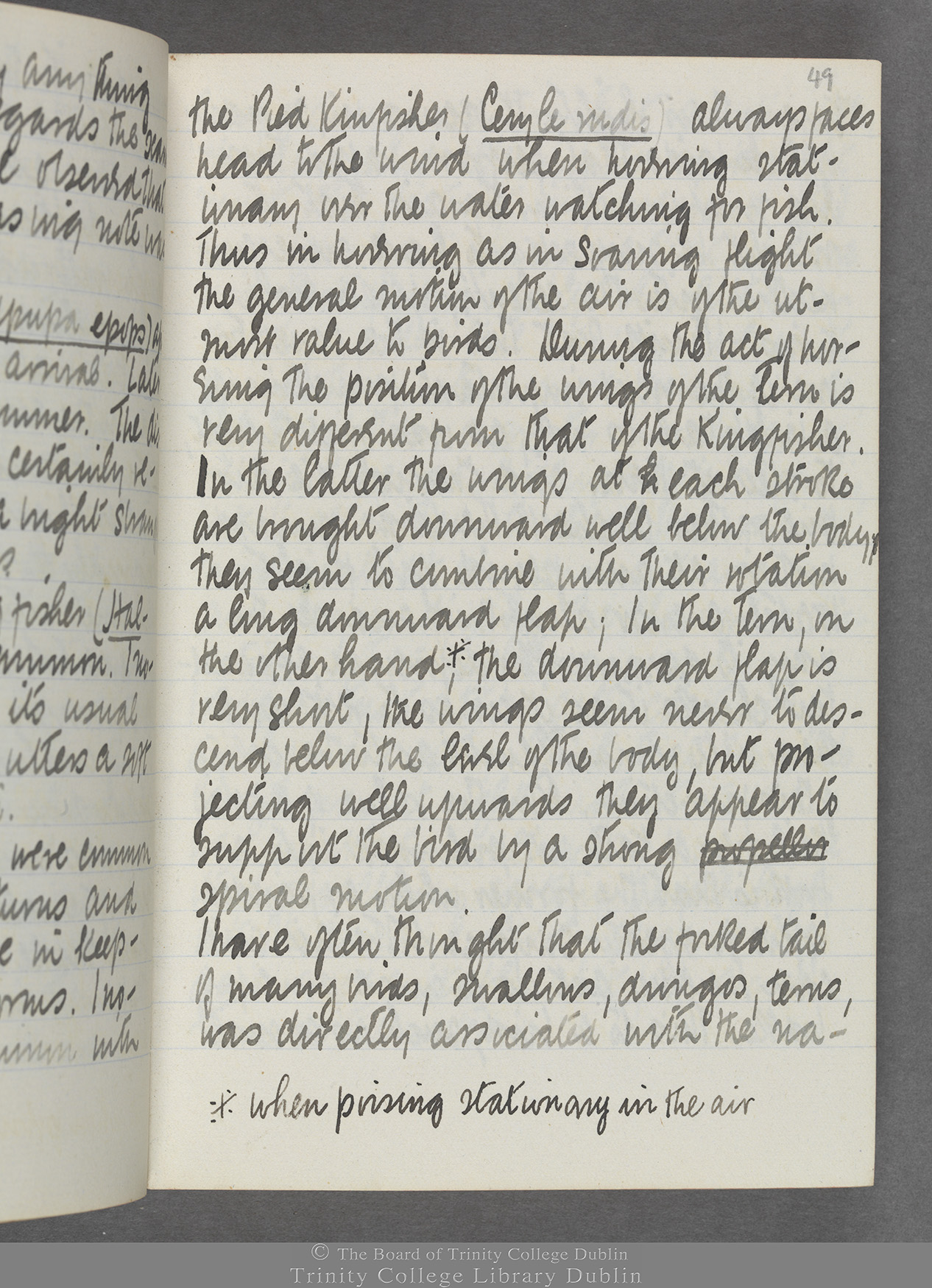[April 28th 1916]
the Pied Kingfisher (Ceryle vidis) always faces head to the wind when hovering stationary over the water watching for fish. Thus in hovering as I soaring flight the general motion of the air is of the utmost value to birds. During the act of hovering the position of the wings of the tern is very different from that of the Kingfisher. In the latter the wings at each stroke are brought downward well below the body; they seem to combine with their rotation a long downward flap; In the tern, on the other hand *, the downward flap is very short , the wings seem never to descend below the level of the body, but projecting well upwards they appesr to support the bird by a strong spiral motion. They often thought that the fork tailed of many birds, swallows, dungos, terns, was directly associated with the na-
* when poising stationary in the air
